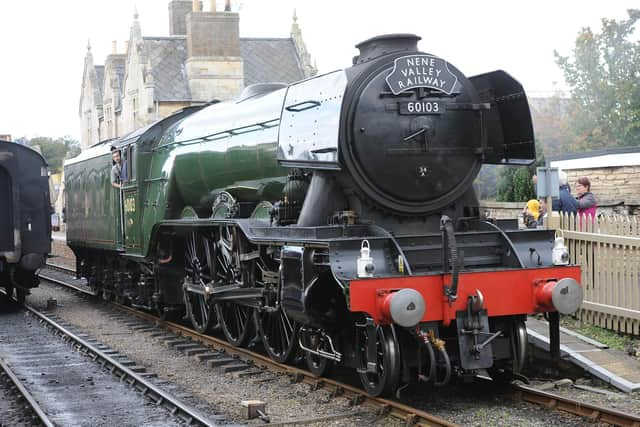Flying Scotsman to pass through small Yorkshire railway stations on Sunday evening - here's where and when to spot locomotive
The famous locomotive has just finished a visit to the East Lancashire Railway, and will leave the heritage line on Sunday afternoon bound for York. However, the route assigned avoids Leeds, Doncaster and the East Coast Main Line during the west-east journey.
The Scotsman enters Yorkshire at Hellifield Station at 3.32pm, continuing along the Bentham Line to Skipton for an estimated 4.18pm arrival and then following the Airedale Line via Keighley at 4.33pm and Shipley at 4.49pm.
Advertisement
Hide AdAdvertisement
Hide AdInstead of passing through Leeds Station, the engine will be diverted towards Castleford, passing through at 5.46pm. At Castleford, trains can still access the old York and North Midland Railway line that ran between Wakefield and York. The passenger service on this stretch ended in 1970, but the route is still used for engineering trains, empty stock and special movements such as the Scotsman. There is a connection to the line between Leeds and Selby, and thence to the line linking Doncaster and Hull that avoids Doncaster Station. The Scotsman will pass Hatfield and Stainforth Station – which it visited several years ago as part of a rail tour to Cleethorpes – at 6.52pm, and just before 8pm will arrive at York Station before being transferred the short distance to the National Railway Museum’s siding.


Although it is not scheduled to call at any of the stations, it may halt nearby to take on water or allow other trains to pass.
The Scotsman celebrates its centenary this year, and as part of the commemoration events, will be on display at the museum until April 16, with visitors able to stand on the footplate. From April 30 it begins touring the nation on a series of steam charter excursions.
Originally, the engine was not scheduled to visit Doncaster, where it was designed and built at the old LNER works in 1923, but lobbying by the city council persuaded owners the National Railway Museum to add it to the itinerary, though further details have yet to be confirmed.
